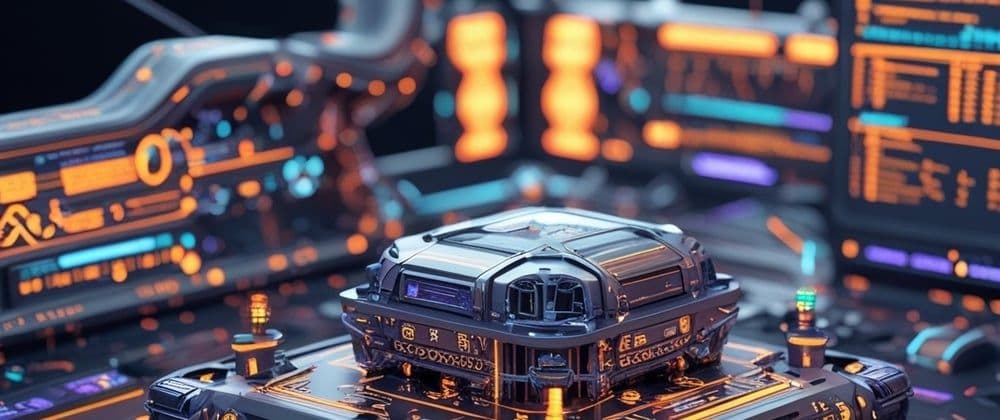HarmonyOS Next Smart Security: Face Comparison and Heterogeneous Computing
HarmonyOS Next Smart Security: Face Comparison and Heterogeneous Computing
This blog post delves into the practical application of face comparison and heterogeneous computing in developing a smart security system using Huawei's HarmonyOS Next (API 12). We'll explore the system's architecture, implementation details, performance optimization strategies, and address challenges encountered during development.
I. Smart Security System: Requirements and Architecture
(1) Functional Requirements Analysis
- Real-time Face Detection and Recognition: The system must quickly and accurately detect faces in video streams, comparing them against a preset database to identify individuals. This is crucial for applications like airport security, where real-time monitoring and identification of suspicious individuals are paramount.
- Efficient Multi-Camera Data Processing: The system must efficiently handle data from multiple cameras simultaneously, addressing parallel processing, resource allocation, and data transmission optimization. A large shopping mall security system, with dozens of cameras, exemplifies this need for scalable data processing.
(2) HarmonyOS Next-Based Architecture Design
- Hardware Selection: Choosing devices supporting heterogeneous computing, such as smart cameras with CPUs and NPUs, is critical. The CPU manages system logic, data preprocessing, and non-computation-intensive tasks (e.g., video decoding), while the NPU accelerates computation-intensive tasks (e.g., face comparison) leveraging its parallel processing capabilities.
- Software Hierarchical Design:
- Data Collection Layer: Collects video data from multiple cameras using a reliable protocol like RTSP, handling potential network failures.
- Processing Layer: The core layer, employing the Core Vision Kit for face feature extraction and comparison. The HiAI Foundation Kit enables heterogeneous computing, assigning tasks to the CPU or NPU based on computational needs. Image preprocessing might run on the CPU, while feature extraction and comparison are offloaded to the NPU.
- Storage Layer: Stores the face database, system configurations, logs, etc., using a database system like MySQL or SQLite, with data encryption and backup measures in place.
- Face Comparison and Heterogeneous Computing Collaboration: The CPU preprocesses video data, the Core Vision Kit extracts features (accelerated by the NPU via the HiAI Foundation Kit), and comparison occurs on the NPU. Heterogeneous computing dynamically allocates resources based on system load and task priorities, ensuring timely and accurate face comparison.
(3) Handling Complex Scenarios
- Multiple Face Recognition: The system detects multiple faces, extracts features for each, and performs parallel comparisons (leveraging multi-core CPU/NPU capabilities). Ambiguous results might require secondary verification or manual review.
- Occlusion Handling: Partial face occlusion is addressed using local feature-based recognition (focusing on unoccluded areas) and potentially integrating multi-modal information (e.g., posture, gait).
II. Core Function Implementation and Technology Integration
(1) Face Comparison Function: Implementation and Optimization
Implementation Process Using Core Vision Kit
import { FaceDetector, FaceFeatureExtractor } from '@kit.CoreVisionKit';
// Initialize the face detection model
let faceDetector = new FaceDetector();
await faceDetector.init();
// Initialize the face feature extraction model
let faceFeatureExtractor = new FaceFeatureExtractor();
await faceFeatureExtractor.init();
// Read the video frame (assuming the video frame data has been obtained)
let frame = getVideoFrame();
// Detect the face
let faceResults = await faceDetector.detect(frame);
if (faceResults.length > 0) {
// Extract the face features
let faceFeature = await faceFeatureExtractor.extract(frame, faceResults[0].boundingBox);
// Here, the extracted features can be stored or compared with the features in the database, etc.
}
Performance Optimization Techniques
Optimizations include techniques such as image pyramid processing for face detection (detecting faces at multiple resolutions) and image normalization for feature extraction stability.
import { ImagePyramid, FaceDetector } from '@kit.CoreVisionKit';
// Create an image pyramid
let imagePyramid = new ImagePyramid(frame, { minSize: 30, maxSize: 300, scaleFactor: 1.2 });
// Traverse each level of the image pyramid for face detection
for (let i = 0; i < imagePyramid.getNumLevels(); i++) {
let levelFrame = imagePyramid.getLevel(i);
let faceResults = await faceDetector.detect(levelFrame);
if (faceResults.length > 0) {
// Process the detected face results, such as converting the coordinates to the original image coordinates, etc.
for (let face of faceResults) {
face.boundingBox = imagePyramid.convertToOriginalCoordinates(face.boundingBox, i);
}
break; // If a face is detected at a certain level, the loop can be ended early
}
}
(2) Heterogeneous Computing in the Security System
Task Allocation with HiAI Foundation Kit
import { HiaiEngine } from '@kit.HiAIFoundationKit';
// Define the matrix multiplication calculation function (here it is assumed that the matrix multiplication algorithm has been implemented)
function matrixMultiplication(a: number[][], b: number[][]) {
// The calculation logic is omitted, and the matrix multiplication algorithm needs to be implemented in practice
return result;
}
// Create a CPU engine instance
let cpuEngine = new HiaiEngine('CPU');
// Create an NPU engine instance
let npuEngine = new HiaiEngine('NPU');
// Define two matrices
let matrixA = [[1, 2, 3], [4, 5, 6]];
let matrixB = [[7, 8], [9, 10], [11, 12]];
// Execute the matrix multiplication task on the CPU
let cpuResultPromise = cpuEngine.executeTask(() => {
return matrixMultiplication(matrixA, matrixB);
});
// Execute the matrix multiplication task on the NPU (assuming the NPU supports matrix multiplication acceleration operations, this is just an example)
let npuResultPromise = npuEngine.executeTask(() => {
return matrixMultiplication(matrixA, matrixB);
});
// Wait for the CPU task to complete and get the result
cpuResultPromise.then((result) => {
console.log('CPU calculation result:', result);
});
// Wait for the NPU task to complete and get the result
npuResultPromise.then((result) => {
console.log('NPU calculation result:', result);
});
Resource Scheduling Strategies
For multi-task scenarios, resource scheduling strategies prioritize tasks based on urgency and resource availability. Task queues manage the order of execution, preventing resource conflicts.
III. Performance Evaluation and System Optimization
(1) Performance Evaluation Indicators and Methods
- Face Comparison Accuracy: Evaluated using accuracy and recall rate, using a test set with diverse conditions (lighting, pose, occlusion).
- Response Speed: Measured as the time from video frame capture to result output, under varying system loads.
(2) Performance Bottleneck Analysis and Optimization Strategies
- Data Transmission Bottlenecks: Addressing bandwidth limitations through higher-bandwidth network devices, optimized network configuration, efficient transmission protocols, and video compression.
- Computing Resource Allocation: Monitoring CPU and NPU utilization to identify and rectify imbalances. Dynamic task allocation and task scheduling algorithms (e.g., First Come First Served, Shortest Job First) improve efficiency.
(3) Optimized System Application Effects and Lessons Learned
- Application Effects: A real-world example demonstrates the system's capabilities in a smart community setting, achieving high accuracy and fast response times.
- Lessons Learned: Proper utilization of HarmonyOS Next features, data quality considerations, and careful hardware/network selection are highlighted.
Related Articles
Software Development
Unveiling the Haiku License: A Fair Code Revolution
Dive into the innovative Haiku License, a game-changer in open-source licensing that balances open access with fair compensation for developers. Learn about its features, challenges, and potential to reshape the software development landscape. Explore now!
Read MoreSoftware Development
Leetcode - 1. Two Sum
Master LeetCode's Two Sum problem! Learn two efficient JavaScript solutions: the optimal hash map approach and a practical two-pointer technique. Improve your coding skills today!
Read MoreBusiness, Software Development
The Future of Digital Credentials in 2025: Trends, Challenges, and Opportunities
Digital credentials are transforming industries in 2025! Learn about blockchain's role, industry adoption trends, privacy enhancements, and the challenges and opportunities shaping this exciting field. Discover how AI and emerging technologies are revolutionizing identity verification and workforce management. Explore the future of digital credentials today!
Read MoreSoftware Development
Unlocking the Secrets of AWS Pricing: A Comprehensive Guide
Master AWS pricing with this comprehensive guide! Learn about various pricing models, key cost factors, and practical tips for optimizing your cloud spending. Unlock significant savings and efficiently manage your AWS infrastructure.
Read MoreSoftware Development
Exploring the GNU Verbatim Copying License
Dive into the GNU Verbatim Copying License (GVCL): Understand its strengths, weaknesses, and impact on open-source collaboration. Explore its unique approach to code integrity and its relevance in today's software development landscape. Learn more!
Read MoreSoftware Development
Unveiling the FSF Unlimited License: A Fairer Future for Open Source?
Explore the FSF Unlimited License: a groundbreaking open-source license designed to balance free software distribution with fair developer compensation. Learn about its origins, strengths, limitations, and real-world impact. Discover how it addresses the challenges of open-source sustainability and innovation.
Read MoreSoftware Development
Conquer JavaScript in 2025: A Comprehensive Learning Roadmap
Master JavaScript in 2025! This comprehensive roadmap guides you through fundamental concepts, modern frameworks like React, and essential tools. Level up your skills and build amazing web applications – start learning today!
Read MoreBusiness, Software Development
Building a Successful Online Gambling Website: A Comprehensive Guide
Learn how to build a successful online gambling website. This comprehensive guide covers key considerations, technical steps, essential tools, and best practices for creating a secure and engaging platform. Start building your online gambling empire today!
Read MoreAI, Software Development
Generate Images with Google's Gemini API: A Node.js Application
Learn how to build an AI-powered image generator using Google's Gemini API and Node.js. This comprehensive guide covers setup, API integration, and best practices for creating a robust image generation service. Start building today!
Read MoreSoftware Development
Discover Ocak.co: Your Premier Online Forum
Explore Ocak.co, a vibrant online forum connecting people through shared interests. Engage in discussions, share ideas, and find answers. Join the conversation today!
Read MoreSoftware Development
Mastering URL Functions in Presto/Athena
Unlock the power of Presto/Athena's URL functions! Learn how to extract hostnames, parameters, paths, and more from URLs for efficient data analysis. Master these essential functions for web data processing today!
Read MoreSoftware Development
Introducing URL Opener: Open Multiple URLs Simultaneously
Tired of opening multiple URLs one by one? URL Opener lets you open dozens of links simultaneously with one click. Boost your productivity for SEO, web development, research, and more! Try it now!
Read More
Software Development, Business
Unlocking the Power of AWS: A Deep Dive into Amazon Web Services
Dive deep into Amazon Web Services (AWS)! This comprehensive guide explores key features, benefits, and use cases, empowering businesses of all sizes to leverage cloud computing effectively. Learn about scalability, cost-effectiveness, and global infrastructure. Start your AWS journey today!
Read MoreSoftware Development
Understanding DNS in Kubernetes with CoreDNS
Master CoreDNS in Kubernetes: This guide unravels the complexities of CoreDNS, Kubernetes's default DNS server, covering configuration, troubleshooting, and optimization for seamless cluster performance. Learn best practices and avoid common pitfalls!
Read MoreSoftware Development
EUPL 1.1: A Comprehensive Guide to Fair Open Source Licensing
Dive into the EUPL 1.1 open-source license: understand its strengths, challenges, and real-world applications for fair code. Learn how it balances freedom and developer protection. Explore now!
Read MoreSoftware Development
Erlang Public License 1.1: Open Source Protection Deep Dive
Dive deep into the Erlang Public License 1.1 (EPL 1.1), a crucial open-source license balancing collaboration and contributor protection. Learn about its strengths, challenges, and implications for developers and legal teams.
Read MoreSoftware Development
Unlocking Kerala's IT Job Market: Your Path to Data Science Success
Launch your data science career in Kerala's booming IT sector! Learn the in-demand skills to land high-paying jobs. Discover top data science courses & career paths. Enroll today!
Read More
Software Development
Automation in Software Testing: A Productivity Booster
Supercharge your software testing with automation! Learn how to boost productivity, efficiency, and accuracy using automation tools and best practices. Discover real-world examples and get started today!
Read MoreSoftware Development
Mastering Anagram Grouping in JavaScript
Master efficient anagram grouping in JavaScript! Learn two proven methods: sorting and character counting. Optimize your code for speed and explore key JavaScript concepts like charCodeAt(). Improve your algorithms today!
Read More
Software Development
Mastering Kubernetes Deployments: Rolling Updates and Scaling
Master Kubernetes Deployments for seamless updates & scaling. Learn rolling updates, autoscaling, and best practices for high availability and efficient resource use. Improve your application management today!
Read More